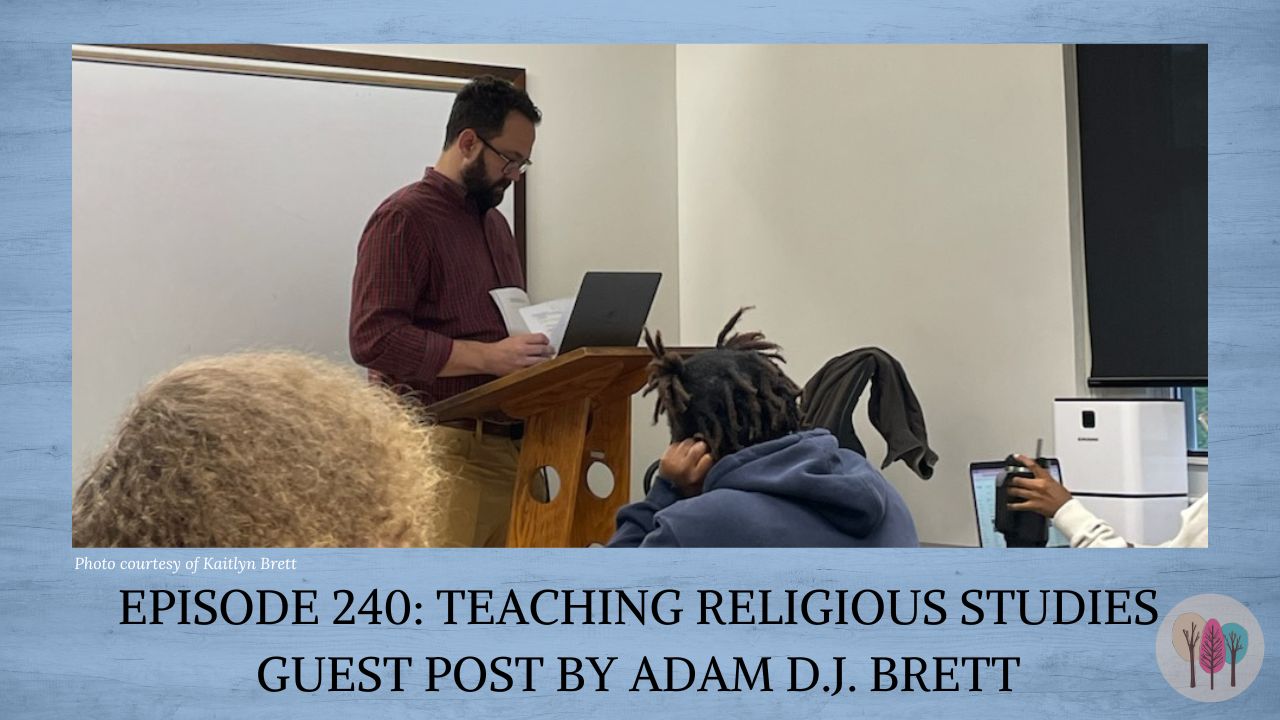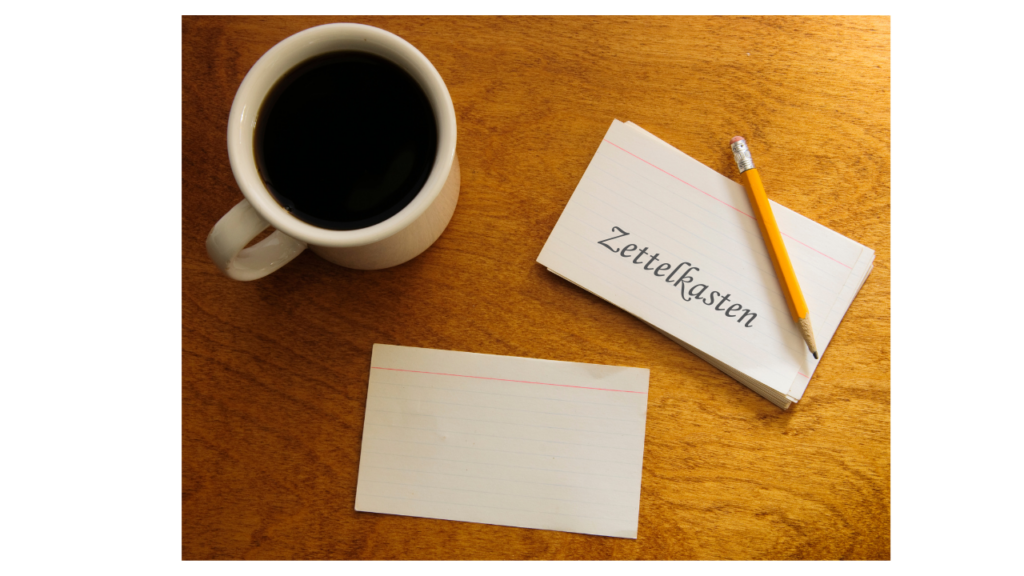This week our guest post “Teaching Religious Studies” comes to us from Dr. Adam D.J. Brett, 3MMM Team member and adjunct instructor. As we approach the new school year, we are excited to offer a series of guest posts about teaching. Adam gives us some lively reflections about teaching undergraduates in religious studies.
Q: What will you be teaching this year?
This fall I will be teaching as an adjunct in the Philosophy and Religious Studies Department at Middle Tennessee State University (MTSU), where I will be teaching one course on the Religion and Society and another course on Indigenous Religions. I love teaching undergraduates at a state school in a religious studies department.
My fall courses will focus on the material dimensions of religion and highlight how religion is about more than belief. Malory Nye suggests that is best to think of religion as a verb like religioning because religion is what people do. It is active not passive, and the manifold practices of meaning making found within religions are varied and highly differentiated. As we explore Religion and Society, I hope my students will learn how people make and find meaning in religious traditions through ritual, ceremony, material objects, practices, and habitus. For some folks belief enters into the equation and for others belief is not a generative category.
Likewise in the Indigenous Religions course we will explore how the category of religion is an outsider category for many indigenous nations. For the Haudenosaunee Confederacy religion is an category that is solely the construction of the scholars who study it, and “religion” does not have a direct relationship to any one particular Indigenous word or concept. Instead it functions as a signifier covering many Indigenous practices. Philip P. Arnold in his book The Urgency of Indigenous Values proposes the phrases Indigenous studies as being a better fit. However others prefer Indigenous lifeways, or to avoid speaking in the abstract all together and to focus on specifics.
Q: What do you love about teaching religion to undergrads?
I love the undergraduate classroom especially in religious studies. In my experience most of the students present are there because they are taking an elective, they are interested, and they want to be there. There are of course some students majoring or minoring in religion (and I always wish there were more). Self-selecting students are interested in the topic or the approach of religions studies. This opens up the possibilities for classroom approaches and conversations. For in-person courses I like teaching three days a week. At least one day of the week we “flip the classroom” where the students facilitate and teach the material.
In a beginning course like Religion and Society, I do more lecture to help situate the material and frame the case studies. Then we hold conversations in the classroom, and we make time for religion lab.
In my upper division courses, where students are in their third or later years and/or they are humanities majors who are well versed in the approaches of the humanities, I like to do some lectures. My aim is to move students up to Harkness method discussions. I focus on the craft of scholarship and teaching helping them learn how to write book reviews, do conference papers, longer research papers, or even a podcast.
When I was in undergrad I loved my upper division seminars where I – as a student – experienced more agency over the course materials. This allowed me to follow my interests where they lead me and focus on topics that really interested me within the bounds of the class. An intellectual sandbox if you will. This is something I am trying to curate for my students as well.
Q: What are the challenges you face in teaching religion to undergrads?
One of the biggest shifts I have seen in the classroom is away from notetaking and methodical logging of one’s intellectual journey of learning through journaling. I think there are many reasons for this shift. One of the most profound pieces is the way technology has transformed the classroom.
I loved technology when I was a student. Technology has really aided my learning. I was the geeky kid taking a Palm Pilot to my high school courses, lugging a laptop to my college courses, and I did most of grad school using a tablet and a kindle.

As a teacher I have struggled with integrating technology in the classroom in a way that is active and not passive. Early in my teaching career I tried banning tech, and that was terrible for me and the students. It did not work. Learning more about Universal Design Learning (UDL) led me to re-integrate technology into the classroom and work on note taking skills with students. I asked students to complete reading logs and take notes in class and then turn them in to me. However, this assignment was often slapdash and turned in late and rather haphazardly. This year I am trying something different.
Zettelkasten
In German Zettelkasten means slip box or card file. The German sociologist Niklas Luhmann popularized this method. He had around 90,000 index cards when he died. Other scholars who have a similar approach are Roland Barthes and Annie Dillard. Dillard described her writing process as placing notecards on a table and pacing around the table, sorting the notecards and crafting her book.
The way I learned this approach was through the Scrivener’s software. At its core Zettelkasten is one of many approaches to knowledge management and educational tracking. As a technique it centers around notecards.
In the program, each notecard is a hyperlink on your knowledge and writing journey. Each notecard has a hypertextual link to the other cards. The cards can be sorted by hashtags, keywords, file cabinet, and whatever works for you. Each card will be sorted and resorted many times. Personally, I find each note card is a quote, thought, idea, or germ of an idea that I want to remember. I write it on the notecard and then add hashtags to the bottom of the card. Then I can sort and file it in many places later. As I work with the idea, I add hashtags (and I rarely delete because it wreaks havoc with my memory).
Zettelkasten in a new way
The physical process of Luhmann’s Zettelkasten is too labor intensive and feels too bureaucratic for me. Annie Dillard’s writing each sentence on a note card and sorting them into an essay also does not work for me. Instead, I find digitized versions of Zettelkasten to be incredibly useful and helpful as the hypertextual linking of hashtags and hyperlinks is way easier. And searching can be so much faster.
To learn more the seven principles of Zettelkasten, visit Sascha’s take on Zettlekasten.de. Pedagogically I want to use Zettelkasten to help students build a knowledge garden, track their reading, thinking, and writing, and also learn from their peers’ reading, thinking, and writing.
Q: What is one thing you’ve learned about the practice of teaching recently?
At an MTSU workshop I met Dr. Mary Leoson who introduced me to story as pedagogy and multimodal composition as elements to incorporate into my pedagogy. In my upper division course, I am creating a multimodal final assignment to allow students to create and explore. Learning how Dr. Leoson and others work on story as pedagogy encouraged me to include my story, create space for students to tell their stories, and to find a way to track the hyperlinks and the threads between these stories. I don’t know if it will be via Zettlekasten, but I am going to give it a shot.






